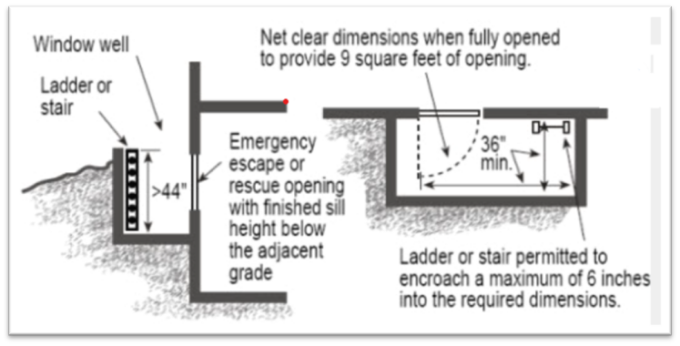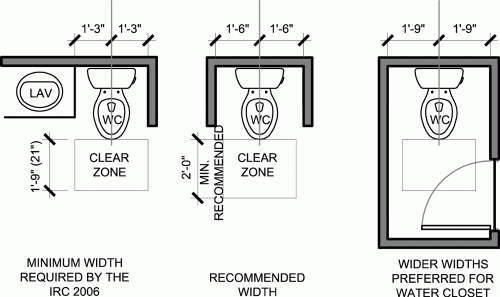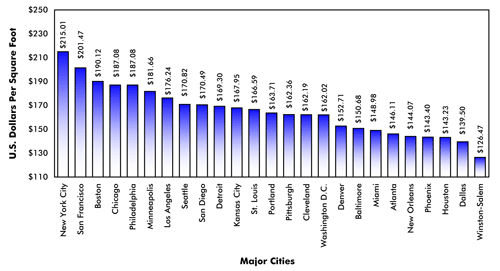Understanding Egress Window Requirements: IRC, IBC, and Colorado Codes:
When designing or renovating a home or commercial building, egress windows play a crucial role in ensuring occupant safety. They provide an emergency exit and allow natural light and ventilation into living spaces. Understanding the regulations surrounding egress windows is essential to compliance and safety. Here, we explore the requirements outlined in the International Residential Code (IRC), International Building Code (IBC), and potential Colorado-specific regulations.
Egress Window Requirements Under the IRC:
The IRC governs residential construction and establishes the minimum requirements for egress windows. These apply to bedrooms, basements, and any habitable spaces where an emergency escape is necessary. The key requirements include:
- Minimum Opening Size: The net clear opening must be at least 5.7 square feet to allow for emergency escape and rescue.
- Minimum Opening Width: The window must have a minimum clear width of 20 inches.
- Minimum Opening Height: The window must provide a minimum clear height of 24 inches.
- Maximum Sill Height: The bottom of the egress window opening must not be higher than 44 inches from the floor.
- Operational Requirements: Egress windows must be operable from the inside without the need for tools, keys, or special knowledge.
- Window Wells (for below-grade windows): If an egress window is installed below ground level, a window well is required. The well must have a minimum horizontal area of 9 square feet, with a minimum projection of 36 inches from the house foundation. If the window well depth exceeds 44 inches, a permanent ladder or steps must be provided.
Egress Window Requirements Under the IBC:
The IBC applies to commercial and multi-family buildings and has similar but slightly more stringent requirements than the IRC. Key differences include:
- Minimum Opening Size: Still 5.7 square feet, except for ground-floor windows, which can be 5 square feet.
- Height and Width Requirements: The same minimums of 24 inches in height and 20 inches in width apply.
- Maximum Sill Height: Also 44 inches above the floor.
- Operational Standards: Windows must be operable from the inside without requiring additional tools or force.
- Window Wells: Similar to IRC, window wells require a 9-square-foot clearance and a means of egress if deeper than 44 inches.

Colorado-Specific Egress Window Requirements:
While Colorado largely follows the IRC and IBC, local jurisdictions may have additional regulations to consider. Some key points include:
- Retrofit Regulations: Older homes undergoing renovations may need to update basement windows to meet modern egress standards, depending on local codes.
- Climate Considerations: Due to Colorado’s cold winters, insulation and energy efficiency factors may impact window installation choices.
- Ladder and Grate Standards: In areas with heavy snowfall, additional measures may be required to ensure egress paths remain clear year-round.
- Local Variations: Denver, Boulder, and other municipalities may impose stricter standards, requiring permits and inspections before installation.

Adding Value to Your Home with Egress Windows:
Beyond safety and code compliance, installing egress windows can add significant value to a home. Finished basements with proper egress windows can be legally classified as livable space, increasing square footage and resale potential. Prospective buyers often seek homes with fully compliant basement living areas, making the addition of egress windows a sound investment.
Additional Value-Adding Benefits Include the following
- Increased Natural Light: Egress windows brighten basements, making them more appealing and livable.
- Better Ventilation: Improved airflow reduces moisture buildup and prevents mold growth.
- Higher Rental Potential: For homeowners looking to rent out a basement apartment, egress windows are typically required to meet legal rental standards.
- Energy Efficiency: Modern egress window installations often include energy-efficient designs that enhance insulation and reduce heating costs.
Final Thoughts:
Understanding and following egress window regulations is critical for both homeowners and builders. Whether working under IRC, IBC, or Colorado’s specific requirements, proper egress window installation enhances safety, property value, and legal compliance. Before starting any project, always check with local authorities to ensure your installation meets the latest codes.
By prioritizing safety and adhering to egress window requirements, you can create a secure and comfortable living space while avoiding potential legal and financial pitfalls







